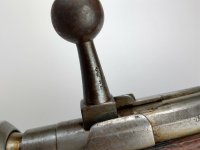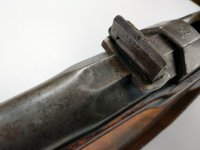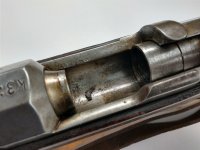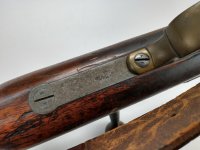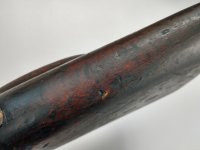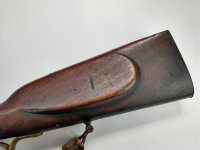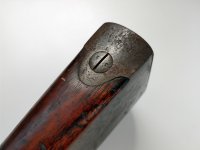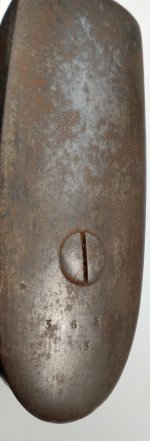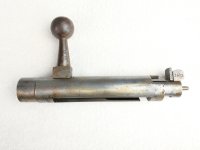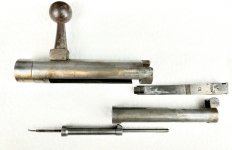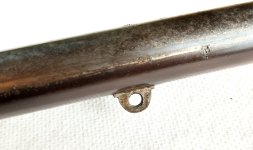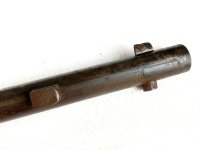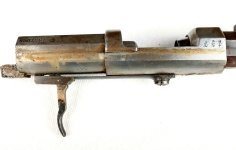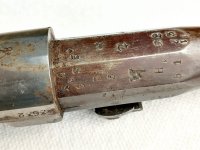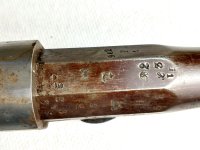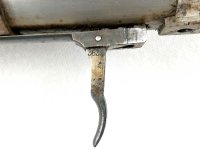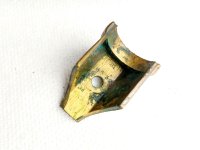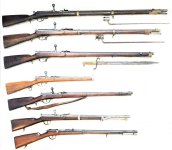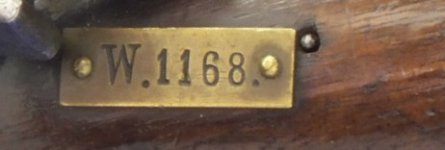Hi All,
This was one I was excited to unbox. Every once in a while Gunbroker goes crazy in the other direction-- this was one case. This was listed with a somewhat incorrect description, but decent pics. I threw my max up and sort of lost track until it hammered cheap.. I'm scratching my head, but hey !
This is a pretty esoteric and rare Dreyse variant intended for the Prussian pioneer battalions. These began life as M54 Jägerbüchse/Pikenbüchse, a short action needle rifle used by Jäger battalions and some naval units-- with the introduction of the M65 Jägerbüchse, many old M54s were no longer needed and converted for use with pioneer troops. The conversion included cutting down the barrel approximately 5 inches, re-configuring the bayonet lug and front band (to something resembling the M60 fusilier rifle), and modifying the needle guide to accommodate the carbine size rounds. The rear sight was also simplified. The stock had the band spring slits plugged with wood inserts and a new combination sling loop/fastening screw was added to retain the barrel in the stock. The first round of the conversions was issued to the Guard Pioneer Battalion in 1866, while subsequent allotments were made to most of the remaining battalions in the following years. While initially called the Zündnadelpioniergewher, after the debut of the newer M69 Zündnadelpioniergewher the U/M (Umgeändertes Modell / Modified Model) designation was added to these for clarity.
This particular example is a real dandy because it is completely textbook for the known conversion process. These simply haven't turned up and it's nice to see one and study it in detail. The rifle began life as an M54 built at Spandau in 1857 and was part of the initial round of conversions as noted by the 1866 re-date and Guard Pioneer unit marking on the buttplate. The stock displays the telltale wood inserts and there even appears to have been reapplication of side acceptance during the rework(You can see another fainter cypher on top of the crisper one) There is also a Landwehr/Landsturm unit marking on the nose cap; likely from its later service history.
The needle is broken, but the rifle completely matches. Interestingly, there is an old tag with "AD 1842" near the rear of the action. My friend with an unaltered M54 has an identical tag with a different number. We were thinking perhaps an old museum inventory tag or collector identifier. Based on my review, the sling *may* be original to the rifle. It's pretty fragile-- there's also a chance it's a very old repro, but hard to say. The marking on the face of the receiver may be tied to the reworking, but I have not been able to confirm that.
In any case, thanks for looking and hope you enjoy the pics.
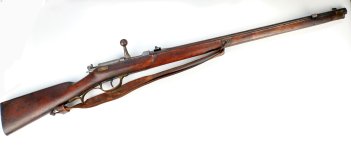
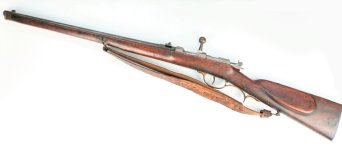

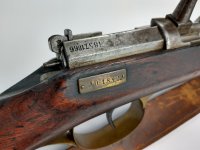
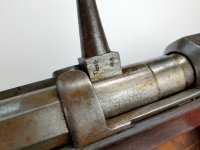
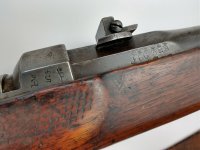
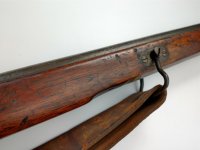
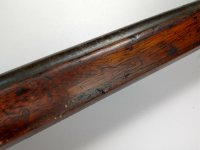
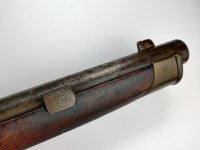
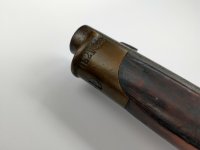
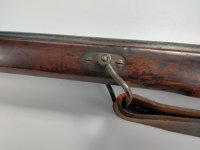
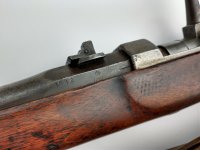
Sources:
ALSTON-ROBERTS-WEST, L. (2019). Dreyse military needle-ignition system: An illustrated history. WOODFIELD Publishing.
This was one I was excited to unbox. Every once in a while Gunbroker goes crazy in the other direction-- this was one case. This was listed with a somewhat incorrect description, but decent pics. I threw my max up and sort of lost track until it hammered cheap.. I'm scratching my head, but hey !
This is a pretty esoteric and rare Dreyse variant intended for the Prussian pioneer battalions. These began life as M54 Jägerbüchse/Pikenbüchse, a short action needle rifle used by Jäger battalions and some naval units-- with the introduction of the M65 Jägerbüchse, many old M54s were no longer needed and converted for use with pioneer troops. The conversion included cutting down the barrel approximately 5 inches, re-configuring the bayonet lug and front band (to something resembling the M60 fusilier rifle), and modifying the needle guide to accommodate the carbine size rounds. The rear sight was also simplified. The stock had the band spring slits plugged with wood inserts and a new combination sling loop/fastening screw was added to retain the barrel in the stock. The first round of the conversions was issued to the Guard Pioneer Battalion in 1866, while subsequent allotments were made to most of the remaining battalions in the following years. While initially called the Zündnadelpioniergewher, after the debut of the newer M69 Zündnadelpioniergewher the U/M (Umgeändertes Modell / Modified Model) designation was added to these for clarity.
This particular example is a real dandy because it is completely textbook for the known conversion process. These simply haven't turned up and it's nice to see one and study it in detail. The rifle began life as an M54 built at Spandau in 1857 and was part of the initial round of conversions as noted by the 1866 re-date and Guard Pioneer unit marking on the buttplate. The stock displays the telltale wood inserts and there even appears to have been reapplication of side acceptance during the rework(You can see another fainter cypher on top of the crisper one) There is also a Landwehr/Landsturm unit marking on the nose cap; likely from its later service history.
The needle is broken, but the rifle completely matches. Interestingly, there is an old tag with "AD 1842" near the rear of the action. My friend with an unaltered M54 has an identical tag with a different number. We were thinking perhaps an old museum inventory tag or collector identifier. Based on my review, the sling *may* be original to the rifle. It's pretty fragile-- there's also a chance it's a very old repro, but hard to say. The marking on the face of the receiver may be tied to the reworking, but I have not been able to confirm that.
In any case, thanks for looking and hope you enjoy the pics.












Sources:
ALSTON-ROBERTS-WEST, L. (2019). Dreyse military needle-ignition system: An illustrated history. WOODFIELD Publishing.
Last edited:

